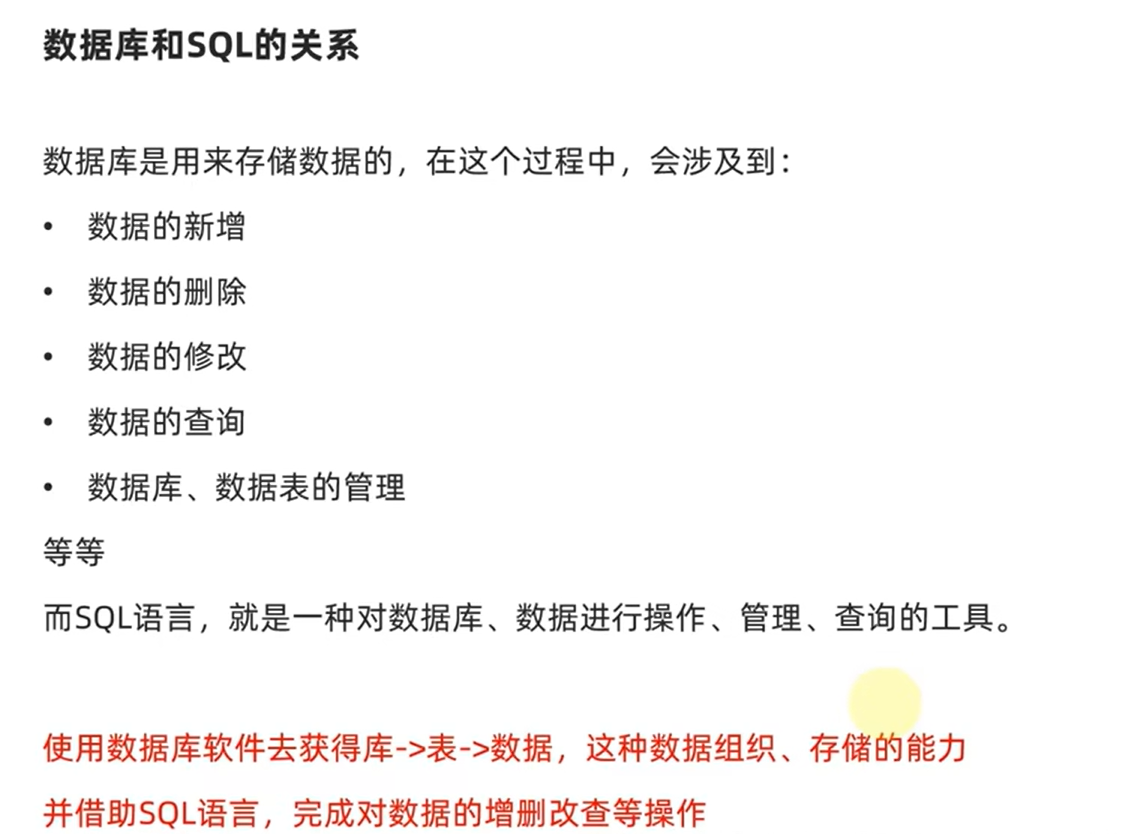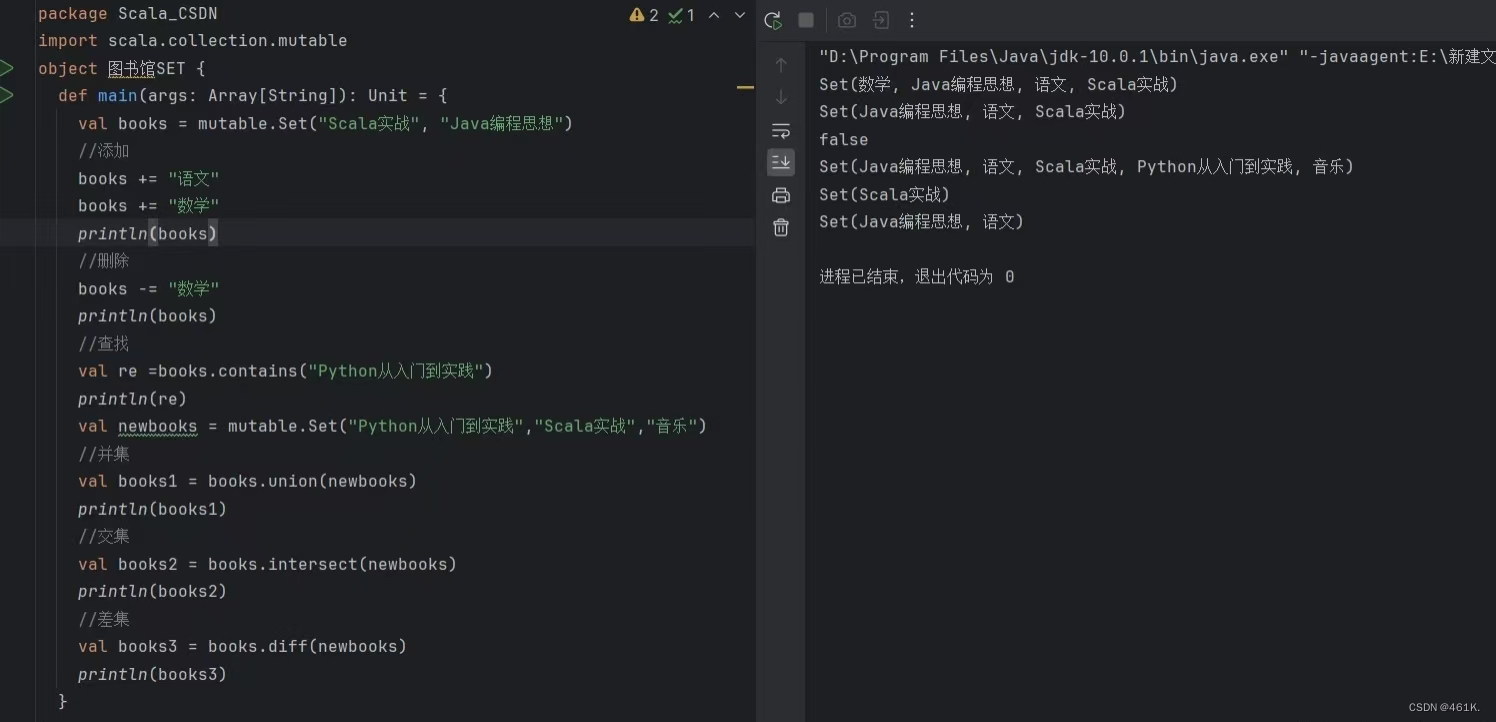文章目录
- 并发与并行(Python实现)
- 1. 并发与并行的原理
- 1.1 并发的基本概念
- 1.2 并行的基本概念
- 1.3 并发与并行的区别
- 1.4 什么是GIL
- 1.4.1 GIL 的原理
- 1.4.2 GIL对Python编程的影响
- 1.4.3 一些常见的python解释器
- 1.4.3.1 CPython
- 1.4.3.2 PyPy
- 1.4.3.3 Jython
- 1.4.3.4 IronPython
- 1.4.4 GIL 的影响总结
- 2. Python 多线程
- 2.1 _thread
- 2.2 threading
- 2.3 守护线程
- 2.4 线程合并(Join)
- 2.5 锁机制
- 2.5.1 多线程没加锁
- 2.5.2 多线程增加锁
- 3. Python 多进程
- 3.1 multiprocessing详解
- 3.2 进程池(Pool)
- 示例:使用 Pool.map 执行多个任务
- 3.3 子进程创建
- 3.4 进程间通信
- 3.4.1 Queue
- 3.4.2 Pipe
- 3.5 Manager 共享数据
- 3.6 一些常见的共享数据方案
- 3.6.1 使用数据库
- 3.6.2 使用文件系统
- 3.6.3 使用消息队列服务
- 3.6.4 使用共享内存(Shared Memory)
- 3.6.5 Manager (服务进程)
并发与并行(Python实现)
1. 并发与并行的原理
1.1 并发的基本概念
在Python中,可以使用threading模块实现并发执行。即使Python的全局解释器锁(GIL)限制了真正的多线程并行执行,threading模块仍然适合I/O密集型任务的并发处理(例如网络请求)。
并发代码示例(使用threading模块):
import threading
import timedef task1():print("Task 1 is running")time.sleep(1) # 模拟I/O等待def task2():print("Task 2 is running")time.sleep(1) # 模拟I/O等待if __name__ == "__main__":thread1 = threading.Thread(target=task1)thread2 = threading.Thread(target=task2)# 启动线程,但任务会交替执行,而非同时执行thread1.start()thread2.start()# 等待任务完成thread1.join()thread2.join()
在此例中,task1 和 task2 是并发执行的,线程轮换交替进行,而不是同时在不同核心上运行。尽管如此,它们在I/O等待时段上“同时”执行,看似是并行的。
1.2 并行的基本概念
在Python中,multiprocessing模块可以实现真正的并行执行,适合CPU密集型任务。multiprocessing可以创建多个进程,每个进程都有独立的Python解释器实例,不受GIL限制,因此可以在多核CPU上实现真正的并行。
并行代码示例(使用multiprocessing模块):
from multiprocessing import Pool
import osdef process_task(item):print(f"{item} is being processed by process {os.getpid()}")if __name__ == "__main__":items = ["Item1", "Item2", "Item3", "Item4"]# 使用进程池并行处理任务with Pool(processes=4) as pool:pool.map(process_task, items)
在此例中,Pool创建了一个进程池,将每个item分配给不同的进程,并行处理。每个任务由独立的进程在不同的核心上执行,实现真正的并行。
1.3 并发与并行的区别
| 特性 | 并发 | 并行 |
|---|---|---|
| 定义 | 在同一时间段内处理多个任务 | 在真正意义上同时处理多个任务 |
| 执行环境 | 单核或多核均可 | 通常需要多核 |
| 实现方式 | 任务交替进行,利用时间片轮转 | 每个任务由独立核心处理 |
| 典型应用 | I/O密集型任务,如网络请求 | CPU密集型任务,如科学计算 |
| 示例 | 网络爬虫、文件读取等 | 数值计算、数据处理等 |
并发和并行代码对比(使用concurrent.futures模块):
from concurrent.futures import ThreadPoolExecutor, ProcessPoolExecutor
import time
import osdef task(name):print(f"Task {name} is being executed by {os.getpid()}")time.sleep(1) # 模拟任务执行时间if __name__ == "__main__":# 并发执行:使用线程池with ThreadPoolExecutor(max_workers=2) as executor:executor.submit(task, "1")executor.submit(task, "2")# 并行执行:使用进程池with ProcessPoolExecutor(max_workers=2) as executor:executor.submit(task, "1")executor.submit(task, "2")
在此示例中,ThreadPoolExecutor使用线程池执行并发任务,而ProcessPoolExecutor则在不同进程上并行执行任务。
1.4 什么是GIL
GIL(Global Interpreter Lock,全局解释器锁)是Python解释器为了简化内存管理和保证线程安全而引入的一种机制。GIL限制了在同一时间只能有一个线程执行Python字节码,从而防止多线程并发访问共享数据导致的不一致问题。
1.4.1 GIL 的原理
- 在Python的标准解释器CPython中,GIL是一个互斥锁,保证了每次只有一个线程持有它,从而可以访问Python解释器的内部数据结构。
- 当一个线程运行一段时间后(执行一定的字节码数量,或遇到I/O操作),会自动释放GIL,让其他线程有机会运行。
- 虽然多个线程可以创建,但由于GIL的存在,它们无法真正实现并行执行CPU密集型任务。
1.4.2 GIL对Python编程的影响
GIL对Python的多线程编程,尤其是CPU密集型任务有以下几个影响:
-
限制CPU密集型任务的并行:
- 在Python中,CPU密集型任务(如数值计算、图像处理)无法通过多线程来实现真正的并行。即便系统有多个CPU核,也只有一个线程在任意时刻执行,导致多线程在CPU密集型任务中并不会加速运行。
import threading import timedef cpu_task():# 模拟计算密集型任务count = 0for _ in range(100000000):count += 1# 创建多个线程 threads = [threading.Thread(target=cpu_task) for _ in range(4)]start_time = time.time() for thread in threads:thread.start() for thread in threads:thread.join() print("Total time:", time.time() - start_time)即使使用4个线程,执行时间不会明显减少,因为GIL限制了CPU的并行。
-
I/O密集型任务表现良好:
- 对于I/O密集型任务(如网络请求、文件操作),多线程仍然可以提高程序性能。因为I/O等待期间GIL会释放,使其他线程可以利用等待时间执行任务。
import threading import timedef io_task():time.sleep(1) # 模拟I/O操作# 创建多个线程 threads = [threading.Thread(target=io_task) for _ in range(4)]start_time = time.time() for thread in threads:thread.start() for thread in threads:thread.join() print("Total time:", time.time() - start_time)在此例中,即便有GIL,多线程可以在I/O等待时切换,因此总耗时接近1秒,而不是4秒。
-
多进程替代方案:
- 为了规避GIL限制,对于CPU密集型任务可以使用
multiprocessing模块创建多个进程。每个进程都有独立的Python解释器实例和GIL,可以在多个核心上并行执行任务。
from multiprocessing import Pool import timedef cpu_task(_):count = 0for _ in range(100000000):count += 1if __name__ == "__main__":start_time = time.time()with Pool(4) as pool:pool.map(cpu_task, range(4))print("Total time:", time.time() - start_time)使用进程池可以充分利用多核CPU的能力,执行时间会显著减少。
- 为了规避GIL限制,对于CPU密集型任务可以使用
GIL在Python中虽然保障了线程安全,但对多线程的并行性能有所限制。对I/O密集型任务,GIL影响较小;但对于CPU密集型任务,使用多进程(而非多线程)是更佳选择,以充分利用多核CPU。
1.4.3 一些常见的python解释器
在Python中,解释器的多样化给不同应用场景带来了不同的性能表现和特性,特别是在多线程、多进程的执行上。以下是几种主要的Python解释器及其在GIL方面的特点和注意事项:
1.4.3.1 CPython
- CPython 是 Python 官方的标准实现,使用 C 语言编写。它是最广泛使用的Python解释器,也是 Python 默认的解释器。
- GIL(Global Interpreter Lock,全球解释器锁) 是CPython中为实现线程安全的一种锁机制。因为Python对象内部管理内存的复杂性,GIL限制了一个进程在同一时间只能有一个线程执行字节码。
- 在多线程 CPU 密集型任务中,GIL显著限制了性能,因为即使在多核 CPU 上,只有一个线程可以在任一时刻获得 GIL 并执行。
- 影响:多线程任务在 CPython 中的性能不如多进程或单线程,因为每次线程切换都涉及到获取和释放 GIL,而这会带来额外的开销。在 I/O 密集型任务(例如文件读取或网络请求)中,GIL的影响较小,因为线程在等待I/O时会释放GIL,允许其他线程执行。
1.4.3.2 PyPy
- PyPy 是 Python 的另一种实现,使用 RPython(Restricted Python)编写,具有 JIT(Just-in-Time)编译功能,这种即时编译大大加快了Python代码的执行速度。
- GIL:PyPy 也包含 GIL,尽管其性能在某些情况下比 CPython 要高,但在多线程的CPU密集型任务中,仍然会受到 GIL 的限制。
- 优势:在很多标准任务(尤其是循环和内存密集型任务)中,PyPy通常比CPython快许多倍。它适合于性能要求高、需要动态编译的 Python 程序。
1.4.3.3 Jython
- Jython 是基于 Java 虚拟机(JVM)运行的 Python 实现。它可以将 Python 代码编译成 Java 字节码,允许 Python 程序调用 Java 库。
- GIL:Jython 没有 GIL,因为 JVM 本身有自己的线程管理机制,可以在多核 CPU 上实现真正的并行。因此,在 Jython 中可以更好地利用多核 CPU。
- 适用场景:适合需要与 Java 深度集成的项目,或需要在 JVM 环境中运行 Python 代码的应用。不过,Jython 并不支持所有 CPython 模块,尤其是那些与底层 C 代码绑定的模块(如 NumPy)。
1.4.3.4 IronPython
- IronPython 是专门为 .NET 框架设计的 Python 实现。它能够与 .NET 框架的库互操作,允许 Python 代码与 C#、VB.NET 等语言共存。
- GIL:IronPython 没有 GIL,因为 .NET 环境有自己的多线程管理方式,支持真正的并行执行。IronPython可以充分利用多核 CPU,因此在多线程任务上更具优势。
- 适用场景:非常适合需要与 .NET 平台整合的项目,尤其在企业环境中广泛应用。不过,和 Jython 类似,IronPython 也不完全兼容 CPython 的标准库。
1.4.4 GIL 的影响总结
- 性能开销:GIL 的存在使得在 CPython 中执行 CPU 密集型任务的多线程性能不高,因为每次线程切换都需要竞争 GIL,带来资源开销。因此,对于 CPU 密集型任务,推荐使用多进程(例如
multiprocessing模块)以充分利用多核 CPU。 - I/O 密集型任务的多线程:尽管 GIL 限制了多线程的并行执行,但对于 I/O 密集型任务(如网络请求、文件操作等),多线程在 CPython 中仍然可以提高性能。因为在 I/O 等待时,线程会释放 GIL,其他线程可以利用这段时间执行任务。
- 选择不同解释器:如果需要更高的多线程性能(特别是 CPU 密集型任务),可以选择没有 GIL 的解释器,如 Jython 或 IronPython,或选择性能更佳的 PyPy。
2. Python 多线程
Python 标准库提供了两个用于多线程的模块:_thread 和 threading。其中 _thread 是一个低级模块,threading 对其进行了封装,提供了更高层的 API,使得多线程编程更加直观和易用。通常,我们只需要使用 threading 模块来进行多线程操作。
2.1 _thread
_thread 是 Python 最基础的多线程模块,但由于其接口较为原始,一般不直接使用。它允许创建和控制线程,但不提供线程同步机制。
示例代码:
import _thread
import timedef print_time(thread_name, delay):for i in range(3):time.sleep(delay)print(f"{thread_name}: {time.ctime(time.time())}")try:_thread.start_new_thread(print_time, ("Thread-1", 1))_thread.start_new_thread(print_time, ("Thread-2", 2))
except Exception as e:print("Error: unable to start thread", e)time.sleep(5) # 确保主线程存活以观察输出
输出示例:
Thread-1: Wed Nov 6 16:44:12 2024Thread-2: Wed Nov 6 16:44:13 2024Thread-1: Wed Nov 6 16:44:13 2024Thread-1: Wed Nov 6 16:44:14 2024Thread-2: Wed Nov 6 16:44:15 2024
说明: _thread 启动了两个线程,Thread-1 每秒打印一次时间,Thread-2 每两秒打印一次。主线程 time.sleep(5) 使主线程暂时等待,确保能看到子线程的输出。
2.2 threading
threading 模块是 Python 中使用多线程的高级接口。它支持线程的创建、管理、同步,提供了更友好的接口。
示例代码:
import threading
import timeclass MyThread(threading.Thread):def __init__(self, name, delay):super().__init__()self.name = nameself.delay = delaydef run(self):for i in range(3):time.sleep(self.delay)print(f"{self.name}: {time.ctime(time.time())}")thread1 = MyThread("Thread-1", 1)
thread2 = MyThread("Thread-2", 2)thread1.start()
thread2.start()thread1.join()
thread2.join()
print("Exiting Main Thread")
输出示例:
Thread-1: Wed Nov 6 16:46:41 2024Thread-2: Wed Nov 6 16:46:42 2024Thread-1: Wed Nov 6 16:46:42 2024Thread-1: Wed Nov 6 16:46:43 2024Thread-2: Wed Nov 6 16:46:44 2024Thread-2: Wed Nov 6 16:46:46 2024Exiting Main Thread
说明: 两个 MyThread 实例以不同的延迟执行,join 保证了主线程等待子线程完成后再退出,确保所有输出完成。
2.3 守护线程
守护线程是为了在主线程结束后自动终止的线程。通常用于执行后台任务(如日志记录等)。在 Python 中可以通过 thread.daemon = True 或 setDaemon(True) 来设置守护线程。
示例代码:
import threading
import timedef daemon_task():while True:time.sleep(1)print("Daemon thread running...")daemon_thread = threading.Thread(target=daemon_task)
daemon_thread.daemon = True
daemon_thread.start()time.sleep(5) # 主线程运行5秒后结束
print("Main thread ending...")
输出示例:
Daemon thread running...Daemon thread running...Daemon thread running...Daemon thread running...Main thread ending...
说明: 两个 MyThread 实例以不同的延迟执行,join 保证了主线程等待子线程完成后再退出,确保所有输出完成。
2.4 线程合并(Join)
join 方法用于等待线程完成。通常在主线程需要等待子线程执行完成后再继续执行时使用。
示例代码:
import threading
import timedef task():time.sleep(2)print("Task completed")thread = threading.Thread(target=task)
thread.start()print("Waiting for the thread to complete...")
thread.join()
print("Thread has completed")
输出示例:
Waiting for the thread to complete...Task completedThread has completed
说明: 主线程在 join 后等待子线程 task 完成并打印信息。
2.5 锁机制
在多线程环境下,如果多个线程同时访问共享资源,会产生数据竞争。
2.5.1 多线程没加锁
以下是一个没有使用锁的示例,用来演示如果多个线程同时访问共享变量而不进行同步,可能会导致数据不一致的问题。
import threadingcounter = 0 # 共享资源,不加锁def increment():global counterfor _ in range(100000):counter += 1# 创建并启动多个线程
threads = [threading.Thread(target=increment) for _ in range(5)]
for thread in threads:thread.start()for thread in threads:thread.join()print("Final counter value:", counter)
预期输出:
Final counter value: 500000
实际输出示例(每次运行的结果可能不同):
Final counter value: 467852
说明:
在这个例子中,counter 变量是多个线程共享的资源,但没有加锁,因此多个线程会同时对其进行读写操作。由于线程间的竞争,counter 的最终值可能会小于预期的 500000。这是因为在没有锁的情况下,多个线程会出现数据竞争或竞态条件,导致一些增量操作丢失,从而使计数结果错误。
原因:
每次执行 counter += 1 时,Python 实际上执行了三个步骤:
- 读取
counter的值 - 将值加 1
- 将结果写回
counter
由于多个线程同时执行这些步骤,可能会导致读取和写入操作互相干扰。例如,当线程 A 读取 counter 的值后,还没来得及写入,线程 B 也读取了相同的值并完成了增量和写入操作。这样,线程 A 的增量操作就被线程 B 的覆盖,从而导致结果不准确。
这个例子展示了没有使用锁的情况下,多线程对共享变量的访问可能会导致数据不一致的问题。这种情况在实际应用中尤其需要注意,锁机制可以用来确保多个线程不会同时修改共享资源,从而避免竞态条件。
2.5.2 多线程增加锁
threading 模块提供了 Lock 对象来实现线程同步。
示例代码:
import threadingcounter = 0
lock = threading.Lock()def increment():global counterfor _ in range(100000):with lock: # 加锁counter += 1threads = [threading.Thread(target=increment) for _ in range(5)]
for thread in threads:thread.start()for thread in threads:thread.join()print("Final counter value:", counter)
输出示例:
Final counter value: 500000
说明: 锁确保 counter 的更新是线程安全的,因此最终计数结果准确。如果不加锁,可能会得到小于 500000 的结果。
3. Python 多进程
在 Python 中,由于全局解释器锁(GIL)的限制,即使在多核 CPU 上运行,多线程程序也无法在 CPU 密集型任务中真正并行执行。GIL 使得同一时间只能有一个线程执行 Python 字节码,这在 I/O 密集型任务中影响不大,但在 CPU 密集型任务中会严重限制性能。为了解决这个问题,multiprocessing 模块提供了多进程支持,使得我们可以创建多个进程来充分利用多核 CPU,以并行的方式处理任务。下面我们详细讲解 Python 中多进程的常用方法。
3.1 multiprocessing详解
multiprocessing 是 Python 中的多进程模块,允许在多个进程中执行任务,适合 CPU 密集型任务。其 API 类似于 threading,支持创建进程、进程同步、进程间通信等功能。
在 multiprocessing 模块中,我们可以通过 Process 类来创建和启动一个进程。每个进程有自己独立的内存空间,不会与其他进程共享变量,这样可以避免多线程中常见的数据竞争问题。这里我们以一个简单的示例来介绍如何创建并启动一个进程。
示例代码:
from multiprocessing import Process
import timedef task(name):print(f"Task {name} is running")time.sleep(2)print(f"Task {name} is completed")process1 = Process(target=task, args=("Process-1",))
process2 = Process(target=task, args=("Process-2",))process1.start()
process2.start()process1.join()
process2.join()
print("All processes are complete")
输出示例:
Task Process-1 is runningTask Process-2 is runningTask Process-1 is completedTask Process-2 is completedAll processes are complete
说明: 在这个示例中,我们创建了两个独立的进程,Process-1 和 Process-2,它们并行地运行任务函数 task。使用 join 方法可以确保主进程等待子进程完成任务后再继续执行,从而保证所有进程的输出完成后,主程序才结束。
3.2 进程池(Pool)
在需要同时处理大量任务时,可以使用 multiprocessing.Pool 创建一个进程池(Pool),从而更方便地控制多个进程的创建和管理。Pool 提供了 map、apply、apply_async、starmap 等方法来管理任务。
示例:使用 Pool.map 执行多个任务
from multiprocessing import Pooldef square(n):return n * nif __name__ == "__main__":with Pool(4) as pool: # 创建4个进程的进程池results = pool.map(square, [1, 2, 3, 4, 5])print("Results:", results)
输出示例:
Results: [1, 4, 9, 16, 25]
说明:在这个示例中,map 方法会将列表中的每个数字传入 square 函数并返回平方结果。进程池允许同时运行 4 个进程,因此在这里充分利用了多核 CPU 的并行计算能力。
3.3 子进程创建
使用 Process 类创建子进程可以让我们直接控制每个进程的启动和终止。下面是一个简单的例子:
from multiprocessing import Processdef child_task():print("Child process is running")if __name__ == "__main__":process = Process(target=child_task)process.start()process.join()print("Child process has finished")
输出示例:
Child process is running
Child process has finished
说明:Process 类直接创建和启动一个子进程。在多进程编程中,我们需要使用 if __name__ == "__main__" 来保护主程序代码,避免重复创建子进程。
3.4 进程间通信
由于每个进程有自己独立的内存空间,进程间的数据是相互隔离的。如果需要在进程之间传递数据,可以使用 multiprocessing 提供的 Queue 或 Pipe 来实现进程间通信。
3.4.1 Queue
Queue 类允许在进程之间共享数据。它使用先进先出(FIFO)模型,使一个进程可以将数据放入队列,另一个进程从队列中读取。
from multiprocessing import Process, Queuedef producer(queue):queue.put("Data from producer")def consumer(queue):data = queue.get()print("Received:", data)if __name__ == "__main__":queue = Queue()p1 = Process(target=producer, args=(queue,))p2 = Process(target=consumer, args=(queue,))p1.start()p2.start()p1.join()p2.join()
输出示例:
Received: Data from producer
说明:Queue 是进程安全的结构,允许一个进程将数据写入队列,另一个进程从队列读取数据。这个例子中,producer 把数据放入队列,consumer 从队列中读取数据并输出。
3.4.2 Pipe
Pipe 是另一种进程间通信机制。它通过创建一对连接对象,允许数据在两个进程之间传递。
from multiprocessing import Process, Pipedef send_data(conn):conn.send("Message from sender")conn.close()def receive_data(conn):print("Received:", conn.recv())conn.close()if __name__ == "__main__":parent_conn, child_conn = Pipe()p1 = Process(target=send_data, args=(child_conn,))p2 = Process(target=receive_data, args=(parent_conn,))p1.start()p2.start()p1.join()p2.join()
输出示例:
Received: Message from sender
说明:Pipe 可以创建一对连接对象,send_data 函数发送数据,receive_data 函数接收数据。Pipe 适用于两个进程之间的双向通信。
3.5 Manager 共享数据
在多进程环境中,有时需要在多个进程间共享复杂的数据结构,例如 list 或 dict。multiprocessing.Manager 可以实现这些数据结构的共享。
from multiprocessing import Process, Managerdef worker(shared_dict, key, value):shared_dict[key] = valueif __name__ == "__main__":with Manager() as manager:shared_dict = manager.dict()processes = [Process(target=worker, args=(shared_dict, i, i * 2)) for i in range(5)]for p in processes:p.start()for p in processes:p.join()print("Shared dictionary:", shared_dict)
输出示例:
Shared dictionary: {0: 0, 1: 2, 2: 4, 3: 6, 4: 8}
说明:在这个示例中,我们使用 Manager 的 dict 方法创建了一个可以在多个进程间共享的字典。每个进程更新字典的不同键值对,最终所有进程完成后打印共享字典的内容。Manager 提供了线程安全的共享数据结构。
3.6 一些常见的共享数据方案
3.6.1 使用数据库
数据库是一个通用的、持久化的数据存储解决方案。各个进程可以通过数据库来共享和交换数据,不受同一机器内存限制。以下是几种常见的数据库:
- 关系型数据库(如 MySQL、PostgreSQL):数据可以被不同进程以 SQL 查询的方式访问和修改,适合需要关系模型和事务支持的场景。
- NoSQL 数据库(如 Redis、MongoDB):NoSQL 数据库如 Redis 在内存中存储数据,速度快且支持简单的数据结构,适合实时数据交换的场景。
示例:使用 Redis 实现数据共享
import redis
import multiprocessingdef write_to_redis():r = redis.Redis(host='localhost', port=6379, db=0)r.set('shared_key', 'Hello from process 1')def read_from_redis():r = redis.Redis(host='localhost', port=6379, db=0)value = r.get('shared_key')print("Read from Redis:", value.decode())# 创建并运行进程
p1 = multiprocessing.Process(target=write_to_redis)
p2 = multiprocessing.Process(target=read_from_redis)p1.start()
p2.start()
p1.join()
p2.join()
3.6.2 使用文件系统
文件系统可以用于在进程之间共享数据,例如 JSON、CSV 或文本文件。进程可以通过读写文件来交换信息。这种方式适合不需要实时更新的数据,且适合小规模数据共享的需求。
示例:使用文件实现数据共享
import json
import multiprocessingdef write_to_file():data = {"shared_key": "Hello from process 1"}with open("shared_data.json", "w") as f:json.dump(data, f)def read_from_file():with open("shared_data.json", "r") as f:data = json.load(f)print("Read from file:", data)p1 = multiprocessing.Process(target=write_to_file)
p2 = multiprocessing.Process(target=read_from_file)p1.start()
p1.join()
p2.start()
p2.join()
3.6.3 使用消息队列服务
消息队列是一种分布式的异步通信方法,可以在进程、甚至不同服务器之间传递消息。RabbitMQ、Kafka 和 ActiveMQ 是常见的消息队列系统。进程可以通过消息队列发布或订阅消息,从而实现数据的共享与分发。
3.6.4 使用共享内存(Shared Memory)
Python 的 multiprocessing 模块也提供了 Value 和 Array 两种数据类型,它们将数据存储在共享内存中,供进程直接访问。共享内存适合小规模、低延迟的数据交换。
具体使用示例见 3.4 进程间通信
3.6.5 Manager (服务进程)
- 适合需要共享复杂数据结构的场景,比如 list 和 dict。
- Manager 启动一个服务进程,其他进程通过代理对象访问该服务进程中的数据,适合需要管理更复杂数据但对性能要求不高的场景。
- 使用时要注意性能,因代理对象的序列化和反序列化会有一定开销。
具体使用示例见3.5 Manager 共享数据
以上方案在不同场景中具有各自的优缺点。数据库和消息队列的优势在于更好的持久化和容错性,适合需要跨进程、跨服务器数据共享的分布式应用。而共享内存、文件系统等更适合小规模、局部的进程内数据交换。
在多进程间共享数据的常见方案中:
- Shared Memory:适合基本数据类型的低延迟共享。
- Manager:适合共享 list、dict 等复杂数据,但性能略低。
- 文件系统 和 数据库:适合持久化数据,跨进程、跨系统共享,适合中大型数据需求。
- 消息队列:适合分布式系统和实时通信。
每种方法适用于不同的场景,可以根据实际需求和性能要求来选择合适的方案。



















